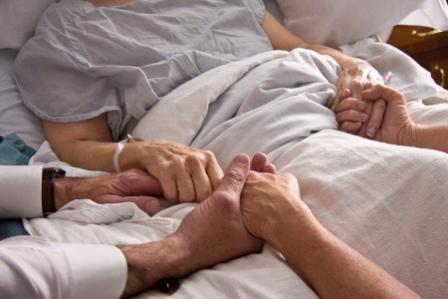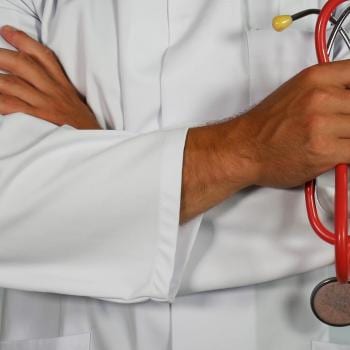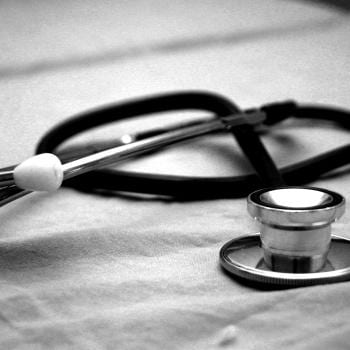New York Times columnist Bill Keller might want to take a refresher course.
In today’s paper, he describes the recent death of his father-in-law from cancer at the age of 80:
When they told my father-in-law the hospital had done all it could, that was not, in the strictest sense, true. There was nothing the doctors could do about the large, inoperable tumor colonizing his insides. But they could have maintained his failing kidneys by putting him on dialysis. They could have continued pumping insulin to control his diabetes. He wore a pacemaker that kept his heart beating regardless of what else was happening to him, so with aggressive treatment they could — and many hospitals would — have sustained a kind of life for a while.
But the hospital that treated him offers a protocol called the Liverpool Care Pathway for the Dying Patient, which was conceived in the 90s at a Liverpool cancer facility as a more humane alternative to the frantic end-of-life assault of desperate measures. “The Hippocratic oath just drives clinicians toward constantly treating the patient, right until the moment they die,” said Sir Thomas Hughes-Hallett, who was until recently the chief executive of the center where the protocol was designed. English doctors, he said, tell a joke about this imperative: “Why in Ireland do they put screws in coffins? To keep the doctors out.”
The Liverpool Pathway brings many of the practices of hospice care into a hospital setting, where it can reach many more patients approaching death. “It’s not about hastening death,” Sir Thomas told me. “It’s about recognizing that someone is dying, and giving them choices. Do you want an oxygen mask over your face? Or would you like to kiss your wife?”
Anthony Gilbey’s doctors concluded that it was pointless to prolong a life that was very near the end, and that had been increasingly consumed by pain, immobility, incontinence, depression and creeping dementia. The patient and his family concurred.
And so the hospital unplugged his insulin and antibiotics, disconnected his intravenous nourishment and hydration, leaving only a drip to keep pain and nausea at bay. The earlier bustle of oxygen masks and thermometers and blood-pressure sleeves and pulse-taking ceased. Nurses wheeled him away from the wheezing, beeping machinery of intensive care to a quiet room to await his move to “the other side.”
Here in the United States, nothing bedevils our discussion of health care like the question of when and how to withhold it. The Liverpool Pathway or variations of it are now standard in most British hospitals and in several other countries — but not ours. When I asked one American end-of-life specialist what chance he saw that something of the kind could be replicated here, the answer was immediate: “Zero.” There is an obvious reason for that, and a less obvious reason.
The obvious reason, of course, is that advocates of such programs have been demonized. They have been criticized by the Catholic Church in the name of “life,” and vilified by Sarah Palin and Michele Bachmann in the pursuit of cheap political gain. “Anything that looks like an official protocol, or guideline — you’re going to get death-paneled,” said Dr. Ezekiel Emanuel, the bioethicist and expert on end-of-life care who has been a target of the rabble-rousers. (He is also a contributing opinion writer for The Times.) Humane end-of-life practices have quietly found their way into cancer treatment, but other specialties lag behind.
Keller makes it sound, predictably, like the Catholic Church is cruel and inhumane—opposed to the kind of palliative end-of-life treatment his father-in-law received. But Church teaching is far more nuanced. Below is a clear description from the National Catholic Bioethics Center. The center has been endorsed by the last two popes, and the esteemed Fr. Tadeusz Pacholczyk serves as its Director of Education and Ethicist. Part of its guidelines state:
Generally, a medical procedure that carries with it little hope of benefit and is burdensome is deemed “extraordinary” and is not obligatory. For example, a person may judge in good conscience that the pain and difficulty of an aggressive treatment for terminal cancer is too much to bear, and thus decide to forgo that treatment. Whether a particular treatment is excessively burdensome to an individual patient is a moral question that often requires the advice of a priest or someone well-trained in moral theology. Individual patients and their families should seek the guidance of the Church whenever there is any doubt about the morality of a particular course of action.
Most medical treatment received during the course of one’s lifetime is routine and does not raise serious moral questions. Sometimes, however, medical circumstances require considerable reflection about what procedures are appropriate for a given medical condition and time of life. When aggressive and experimental methods are recommended by a physician, the Church teaches that we are free to pursue such treatment whenever there is a reasonable hope of benefit to the patient. We are also free, however, to refuse treatment that is of dubious benefit or when its burdens are clearly greater than its benefits. For example, I might want extraordinary moral means used to extend my life in order to receive the sacraments of the Church, or to see friends or relatives one last time, or to be reconciled with somebody from whom I’ve been estranged. The use of extraordinary moral means always remains optional, but the moral obligation to conserve life obliges us simply to act in the most reasonable manner.
Of course, moral questions arise in determining just when a life is “very near the end,” and who decides such things, and why a particular course of action may be desirable. On the subject of euthanasia, however, the teaching is clear:
When formulating any Advance Directive and discussing end-of-life issues we should avoid using the expression “quality of life” because it is used by advocates of euthanasia to suggest that some lives are not worth living. “While illness and other circumstances can make life very difficult, they cannot diminish the inestimable worth of each human life created by God. ”Life itself is always a good, and is a quality that can never be lost. Still, we need not cling to this life at all costs, since the life to which we have been called in Christ is incomparably better.
Euthanasia has been defined by Pope John Paul II, in The Gospel of Life, as “an action or omission which of itself and by intention causes death, with the purpose of eliminating all suffering.” Supporters of euthanasia often justify it or physician-assisted suicide on the grounds that the pain of terminal illness is too great for the average person to bear. They hold that it is more merciful to kill the suffering patient. The Pope, as representative of Christ on earth, holds that “euthanasia is a grave violation of the law of God, since it is the deliberate and morally unacceptable killing of a human person.” It is a fundamentally unreasonable act.
Bill Keller, meantime, concludes his column by noting:
During Anthony Gilbey’s six days of dying he floated in and out of awareness on a cloud of morphine. Unfettered by tubes and unpestered by hovering medics, he reminisced and made some amends, exchanged jokes and assurances of love with his family, received Catholic rites and managed to swallow a communion host that was probably his last meal. Then he fell into a coma. He died gently, loved and knowing it, dignified and ready.
“I have fought death for so long,” he told my wife near the end. “It is such a relief to give up.”
We should all die so well.
Indeed. And the Catholic Church agrees.
UPDATE: A deacon reader clarifies:
This might give the impression that removal of food and water is acceptable to the Catholic church as a matter of course for the dying. It is not. One can only remove food and water when death is imminent and or the body can no longer assimilate these, meaning it is useless and burdensome. Since the newspaper article had no context for this delicate question of removal of food and water, I am concerned that some might think it is ok to remove such prematurely. See The Ethical and Religious Directives no. 58. CCC 2278 as well.












